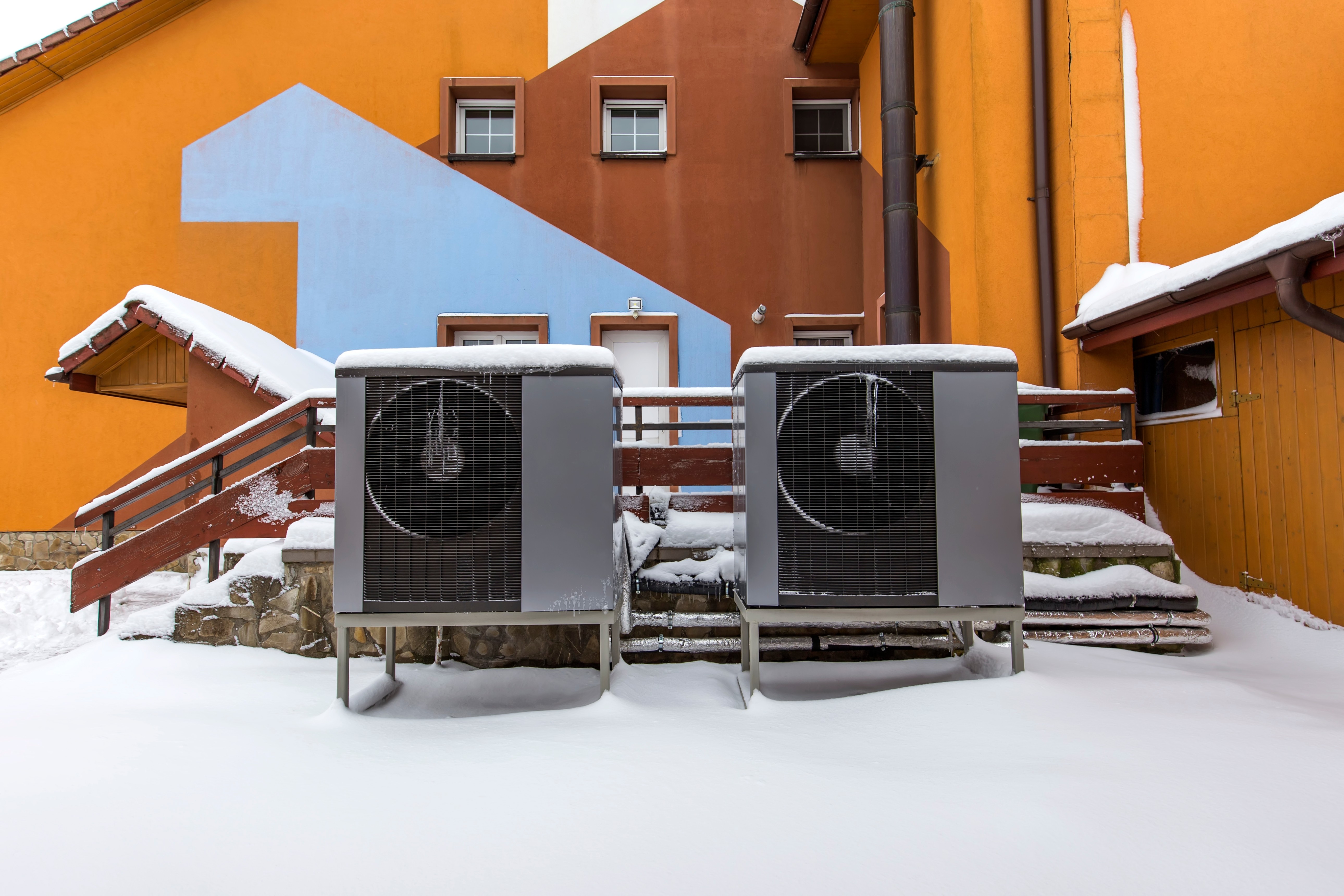Published May 29, 2024 • 6 Min Read
Heat pumps have been growing in popularity across Canada. As of August 2023, over 840,000 Canadians had installed heat pumps to heat and cool their homes.
There are myriad reasons why Canadians are choosing heat pumps, including pure economics. According to a report from the Building Decarbonization Alliance, Efficiency Canada, the Canadian Climate Institute, and the Greenhouse Institute, Canadians can save a collective $10.4 billion on their energy bills by adopting heat pumps instead to heat and cool their homes.
The reason heat pumps can yield big savings is because they are far more efficient than traditional heating and cooling systems. For example, heat pumps are an average of three times more efficient than electric resistance or electric boiler heating.
Superior efficiency also helps explain why heat pumps are seen as a powerful tool to lower Canada’s greenhouse gas emissions. Indeed, 99 percent of residential emissions come from home heating systems. The embrace of heat pumps could reduce Canada’s greenhouse gas emissions from home heating nearly 20 million tons by 2035.
Serious questions about cold weather performance
Grasping the comparative efficiency and greenhouse gas emission reduction advantages of heat pumps require understanding how they work. Instead of burning oil, natural gas, or propane to run furnaces and boilers or consuming electricity to power air conditioning units, heat pumps work by transferring existing heat from one place to another.
For example, in wintertime an air-source heat pump transfers heat from the outside of a home inside to warm it up. In summertime heat pumps move heat in the opposite direction, cooling a house by transferring hot indoor air to the outdoors. Heat pumps are powered by Canada’s electric grid – where 84 percent of the power generated is zero emissions.
But a major challenge to the spread of heat pumps across Canada is the longstanding belief that they are unable to reliably heat homes when wintertime temperatures plunge. These concerns are rooted in fact. According to research by the Electric Power Research Institute (EPRI), a conventional air-source heat pump operates at less than 50 percent of its maximum capacity when temperatures reach 10 degrees Fahrenheit (or about -12 Celsius). This type of heat pump operates at 100 percent of its maximum capacity at 50 degrees Fahrenheit (10 degrees Celsius). The reduced capacity in cold weather is the result of heat pump efficiency dropping alongside temperatures.
The emergence of cold climate heat pumps
The fact that traditional air-source heat pumps struggle to perform in extreme cold limits their viability in regions of Canada. For example, average winter temperatures in Alberta range from -14 to -30 degree Celsius.
Both heat pump manufacturers and policymakers advocating for the technology’s use to lower greenhouse gas emissions recognize their problematic performance in cold weather. In fact, Natural Resources Canada (NRCan) teamed up with the U.S. Department of Energy (DOE) to launch the Residential Cold Climate Heat Pump Challenge, which aims to improve the technology’s ability to provide reliable heat when temperatures plummet.
Cold climate heat pump technology is advancing quickly. Already, cold climate heat pumps can heat homes when outdoor temperatures reach -30 degrees Celsius. The improved performance is the result of the implementation of variable speed compressors. Air-source heat pumps rely on single-speed compressors, which means that they are either running at full capacity or completely turned off.
In contrast, cold climate heat pumps use variable speed compressors. This means cold climate heat pumps have the flexibility to adjust their output based on what the home heating needs are, which improves their efficiency. Cold climate heat pumps can also be supplemented by an additional heating source, such as electric resistance heating, that kicks in if the heat pump can’t maintain a comfortable temperature in extreme cold.
How much does a cold climate heat pump cost?
Cold climate heat pumps are more expensive than single-speed, air-source heat pumps. Air-source heat pumps cost between $4,000 and $10,000 and a top-of-the-line cold climate will add another 20 to 30 percent to the price tag.
Whether the added costs of a cold climate heat pump are worth it depends on where you live and your financial circumstances.
Do you need a backup system with a cold climate heat pump?
A recent study by the Canadian Climate Institute analyzed available residential heating and cooling options in five cities and determined that heat pumps offer the lowest lifetime cost for most households. This included Edmonton, which has both low gas prices and a cold climate. In Edmonton heat pumps with gas backup or a gas furnace with air conditioning are the most cost competitive option. Overall, the Canadian Climate Institute’s analysis found that electricity is the most affordable backup heat source for a heat pump.
But do you need a backup system at all? One of the benefits of a cold climate heat pump is that it can remove the necessity of a backup heating source. “[Cold climate] heat pumps have higher upfront costs but reduce the need for backup systems because of their effective performance in cold temperatures,” write the authors of the Climate Institute report.
The best approach is to work with an EnerGuide advisor who can do an energy audit of your home and recommend the best heat pump for your climate and guide you on the necessity of a backup heating source.
Financial incentives can lower the upfront cost of a cold climate heat pump
Because the government see heat pumps as an effective way to lower greenhouse gas emissions, incentives to help defray the cost of purchasing a heat pump are available. Incentives include:
-
The federal government’s Oil to Heat Pump Affordability program provides up to $10,000 for the purchase and installation of cold climate air-source heat pumps that replace the use of oil for home heating.
-
The Canada Greener Homes Loan offers interest-free loans of between $5,000 and $40,000 to finance retrofits recommended by an energy advisor, including the installation of a heat pump.
-
Provinces and municipalities also provide incentives to make heat pumps more financially attractive. Learn more about available rebates in your province and heat pump financing options.
This article is intended as general information only and is not to be relied upon as constituting legal, financial or other professional advice. A professional advisor should be consulted regarding your specific situation. Information presented is believed to be factual and up-to-date but we do not guarantee its accuracy and it should not be regarded as a complete analysis of the subjects discussed. All expressions of opinion reflect the judgment of the authors as of the date of publication and are subject to change. No endorsement of any third parties or their advice, opinions, information, products or services is expressly given or implied by Royal Bank of Canada or any of its affiliates.
Share This Article






